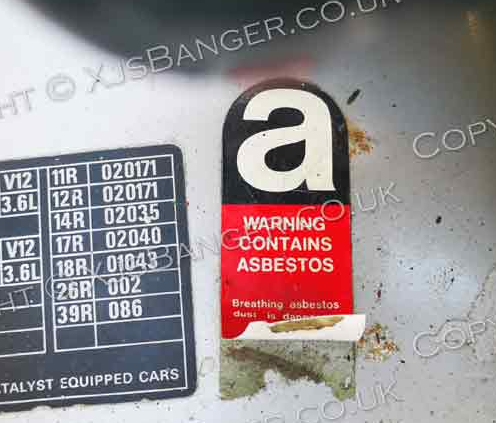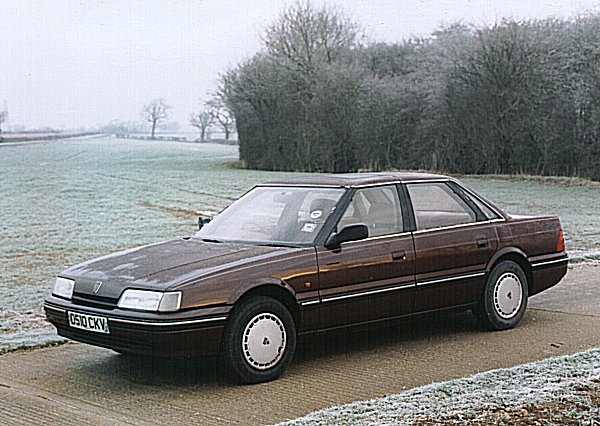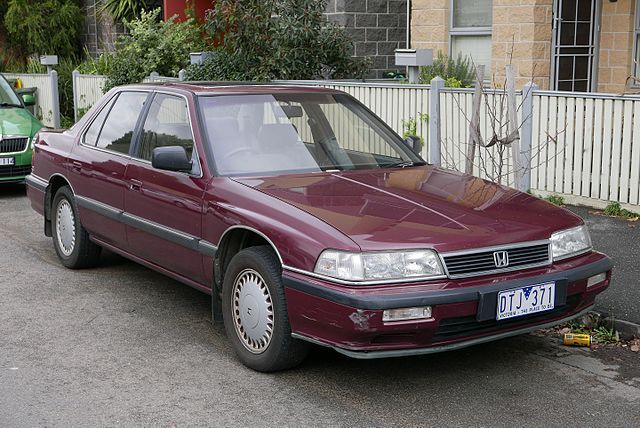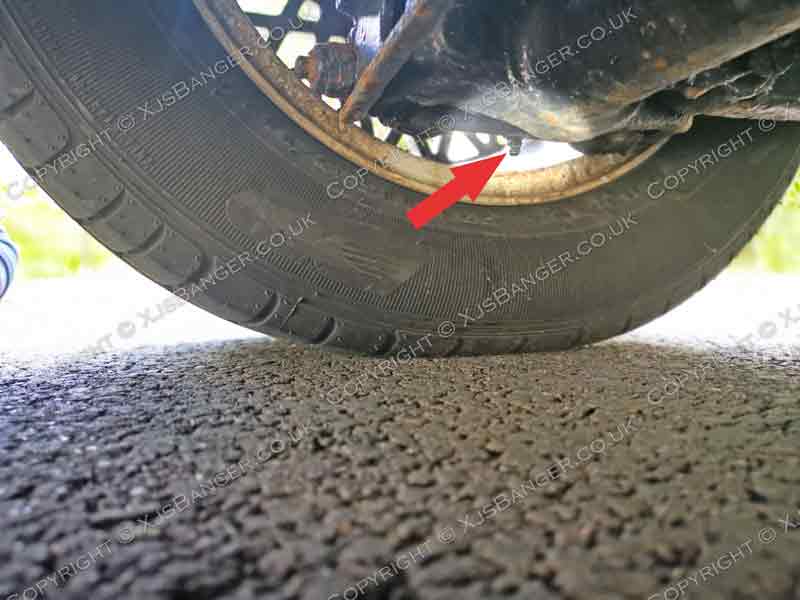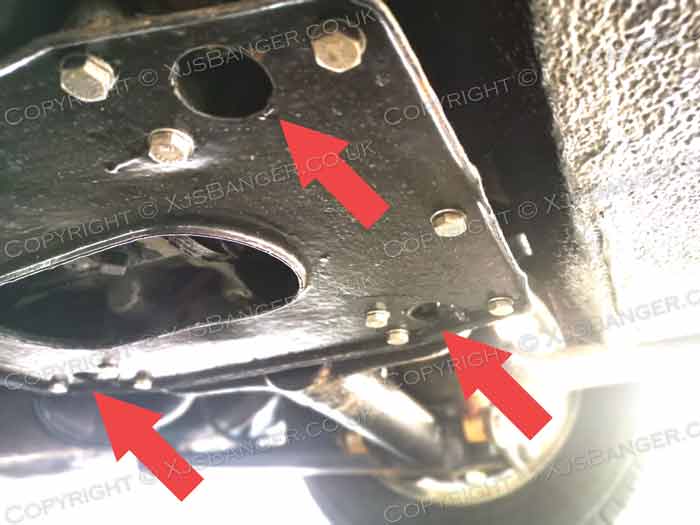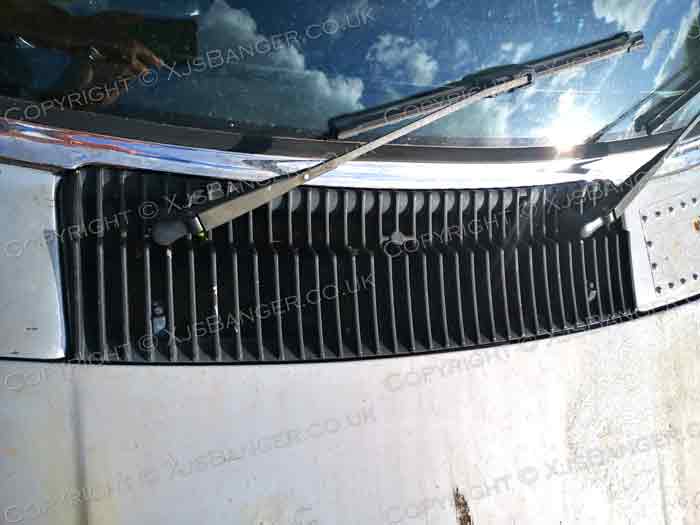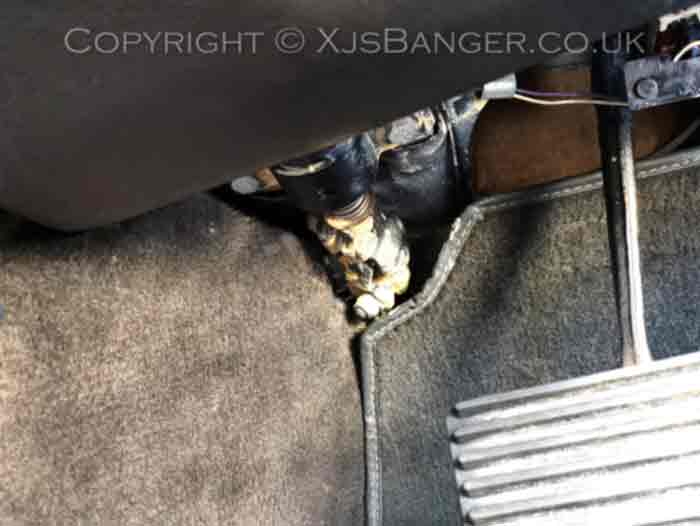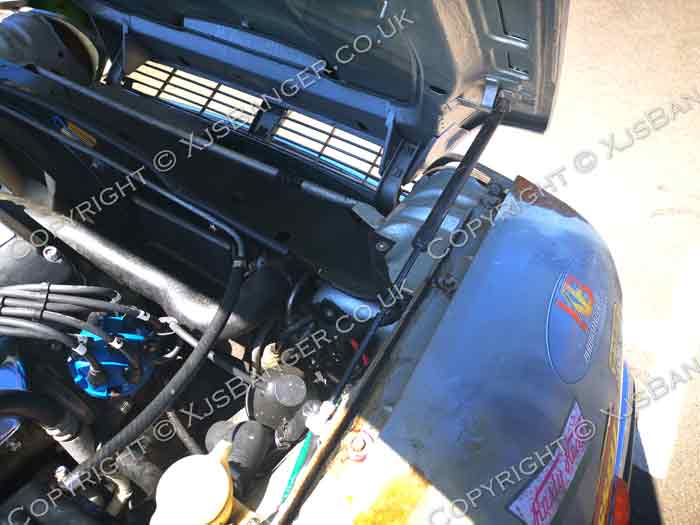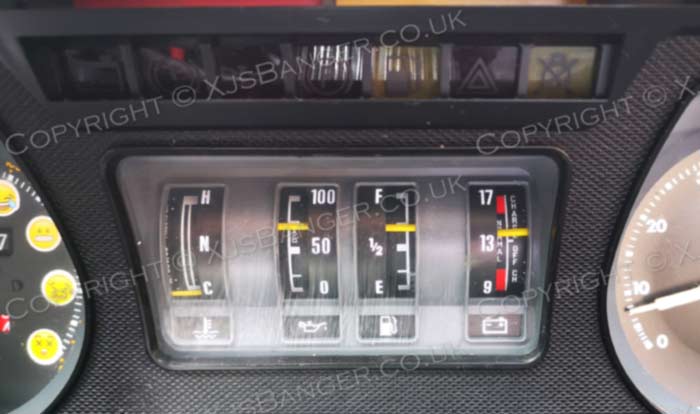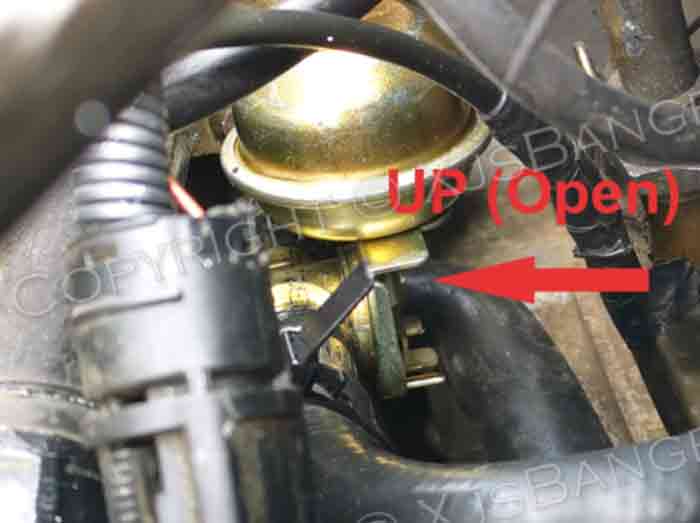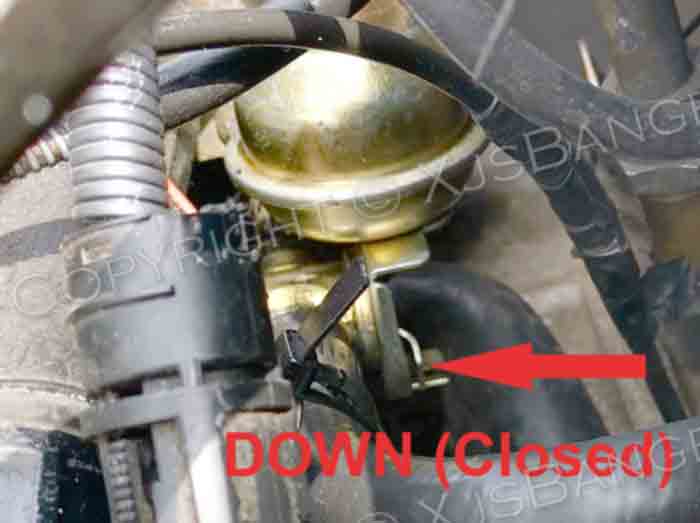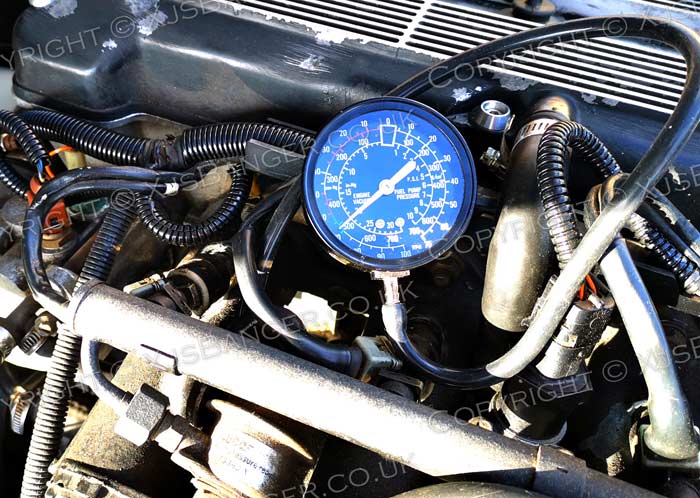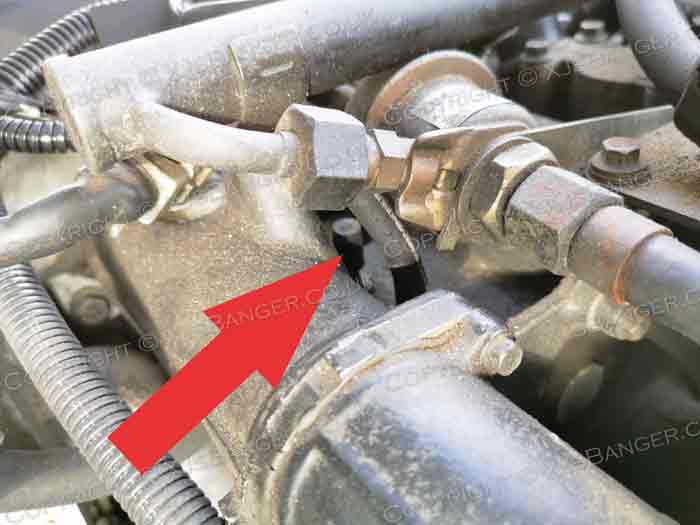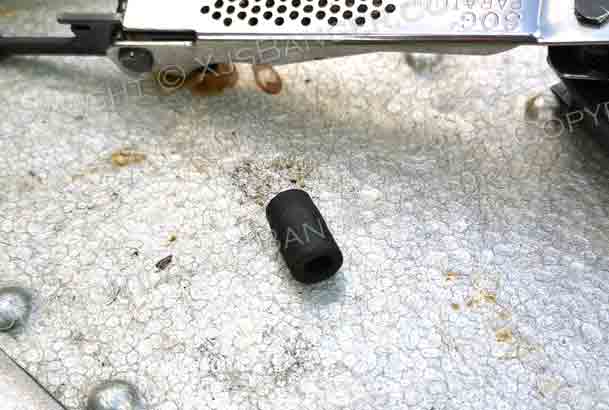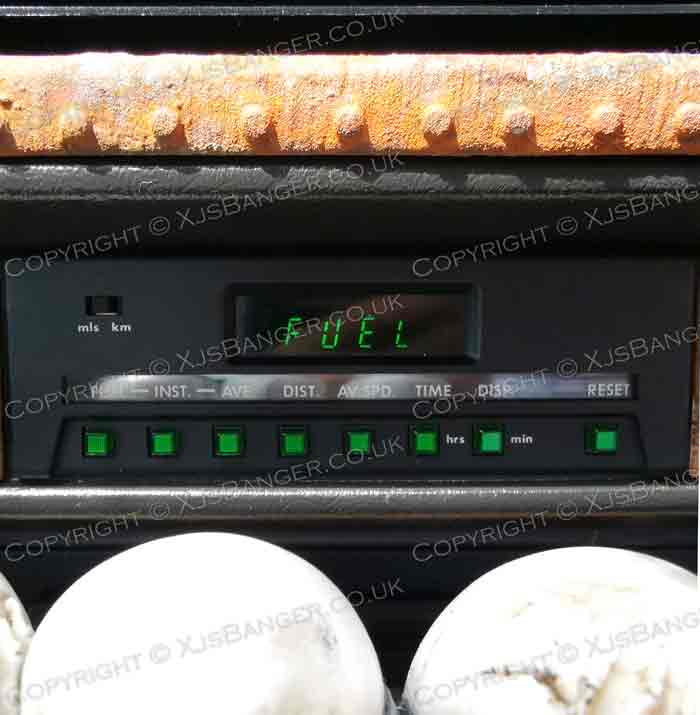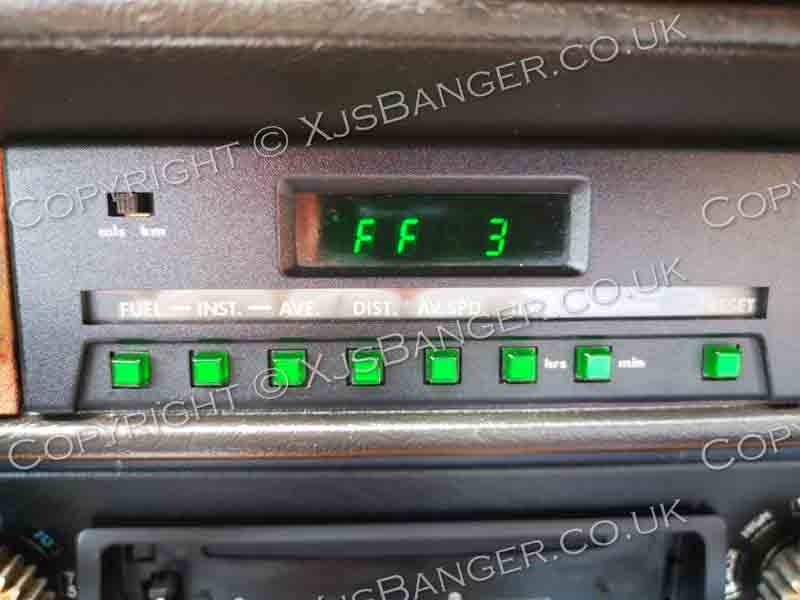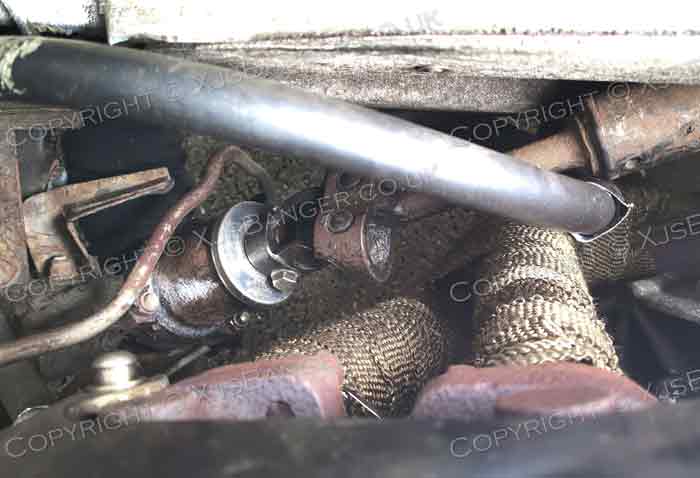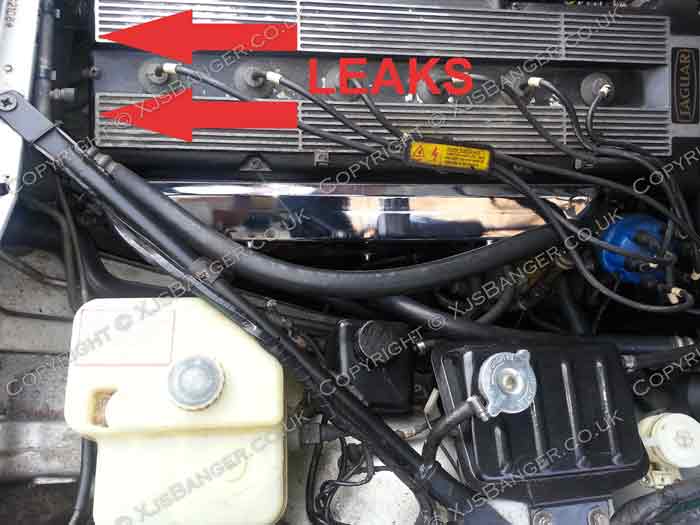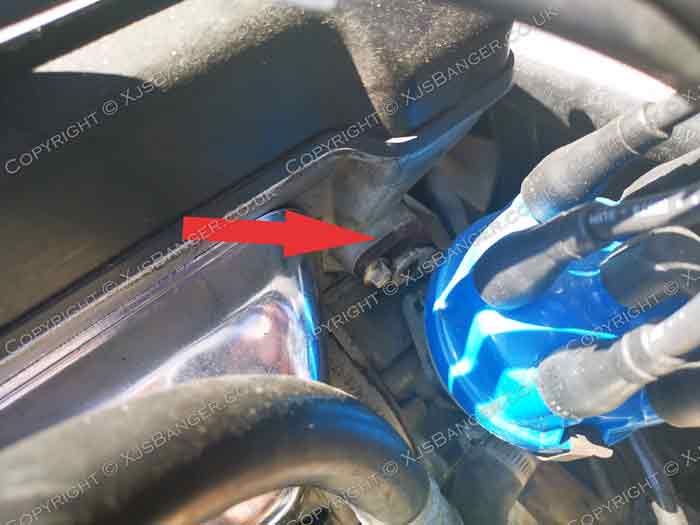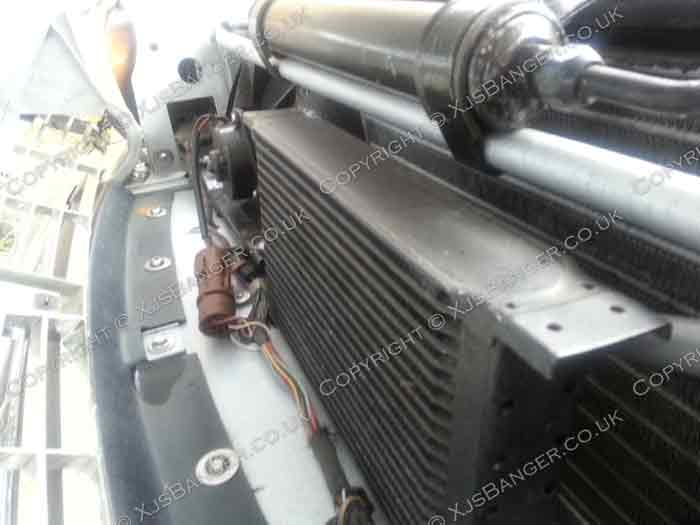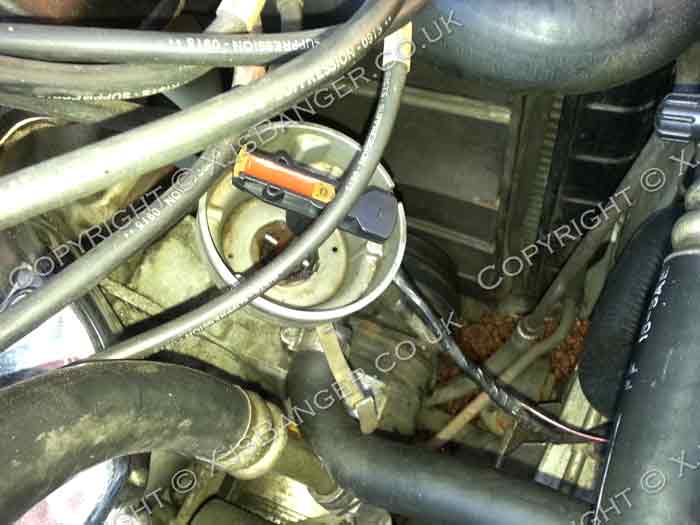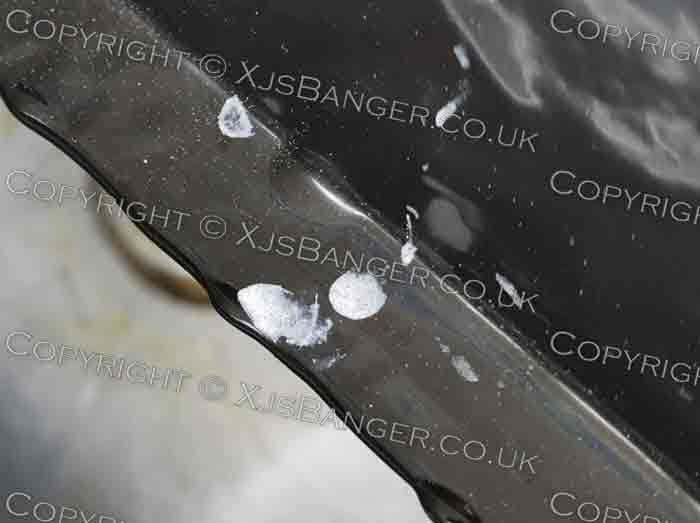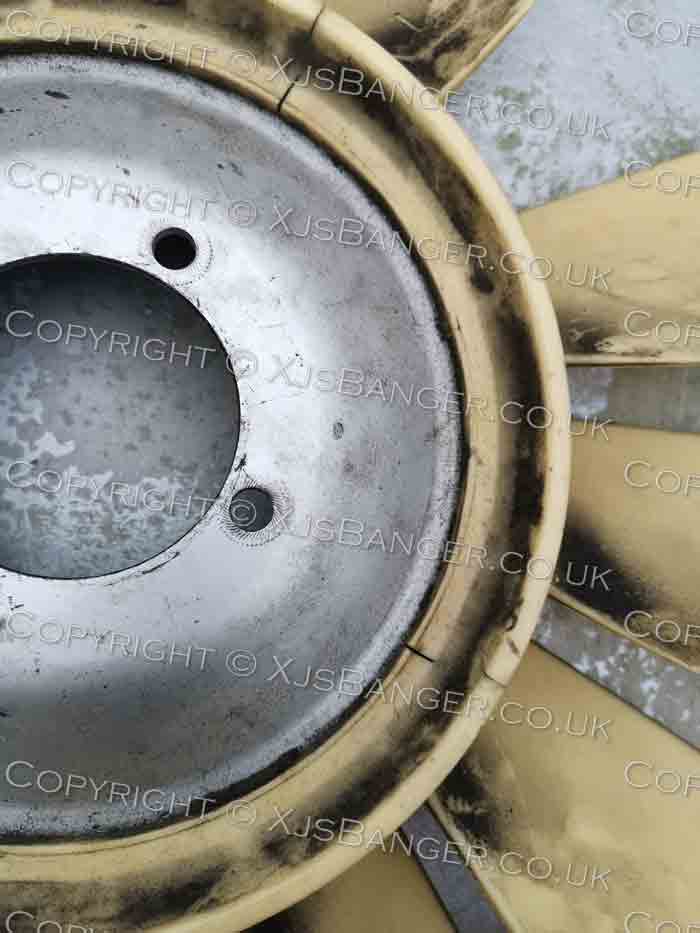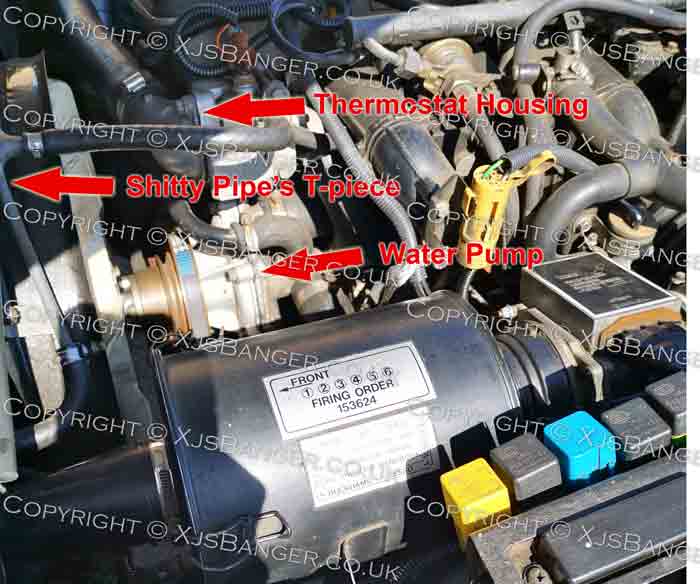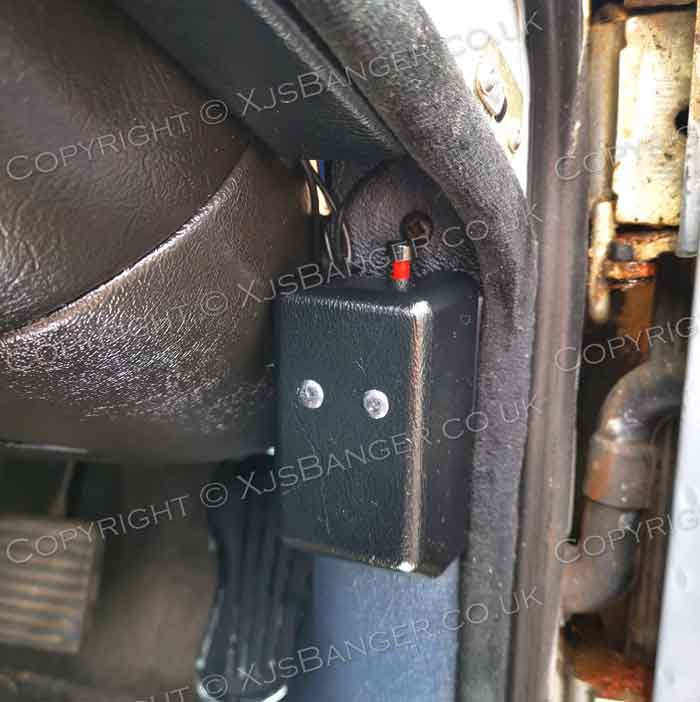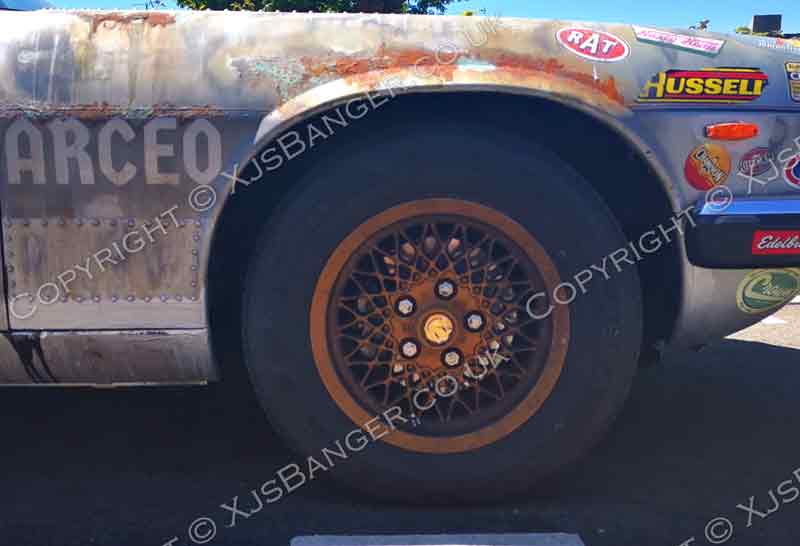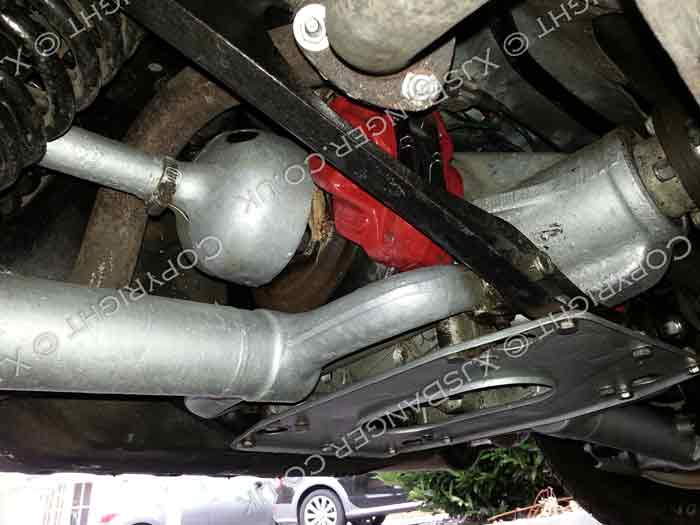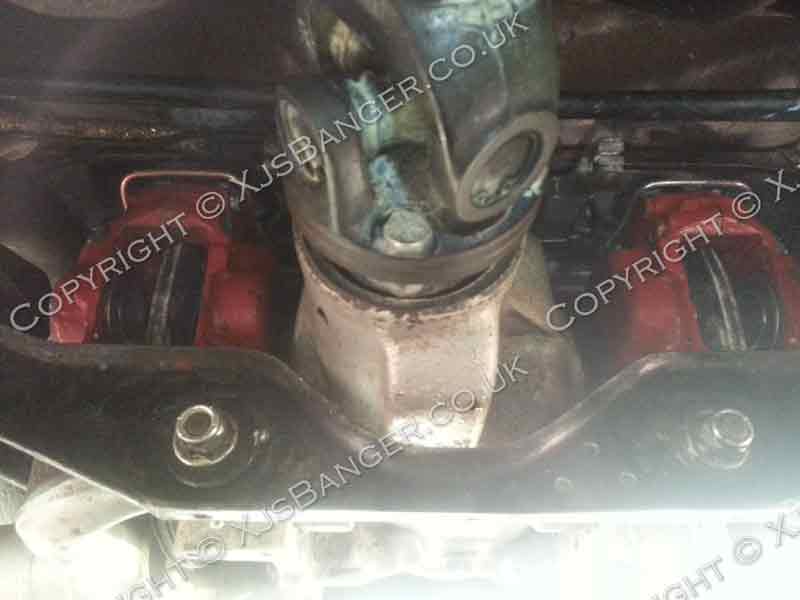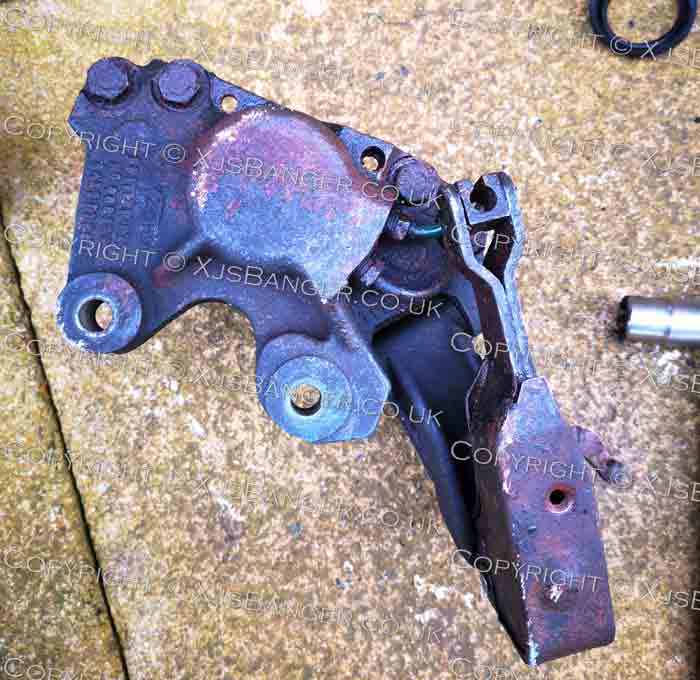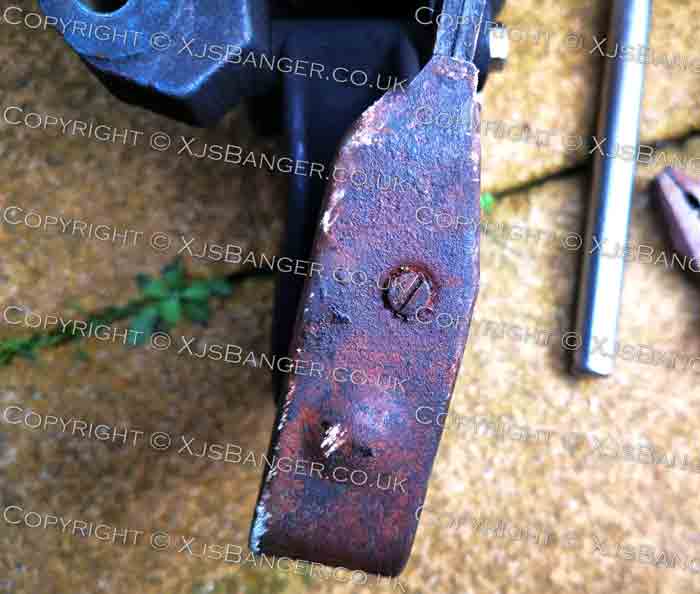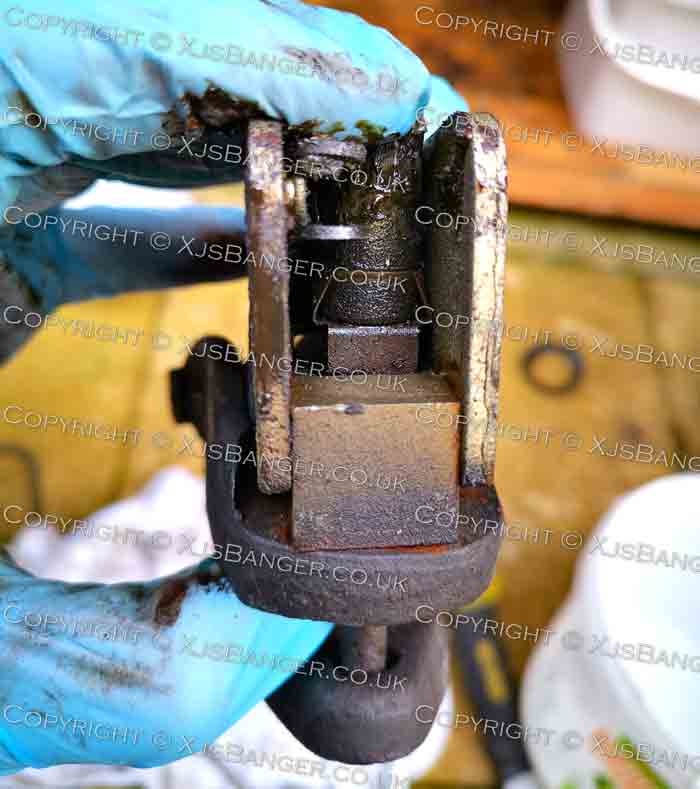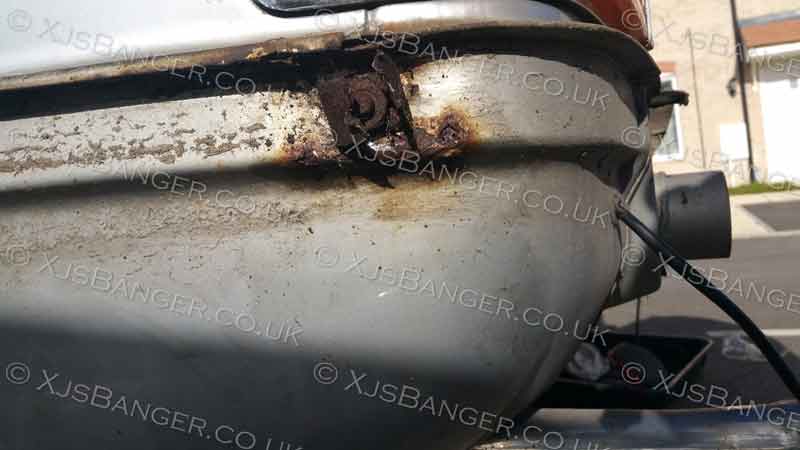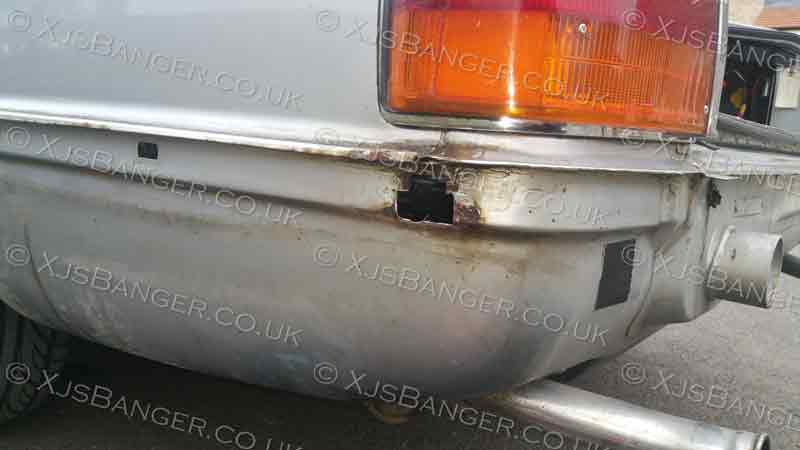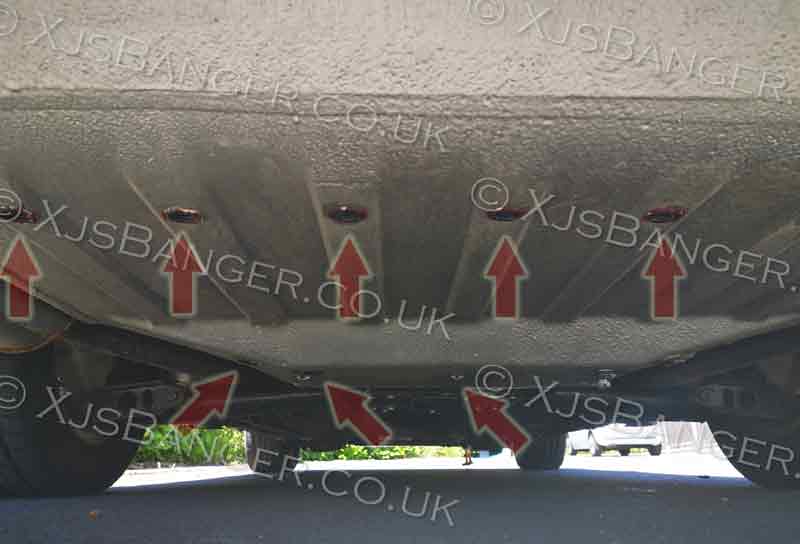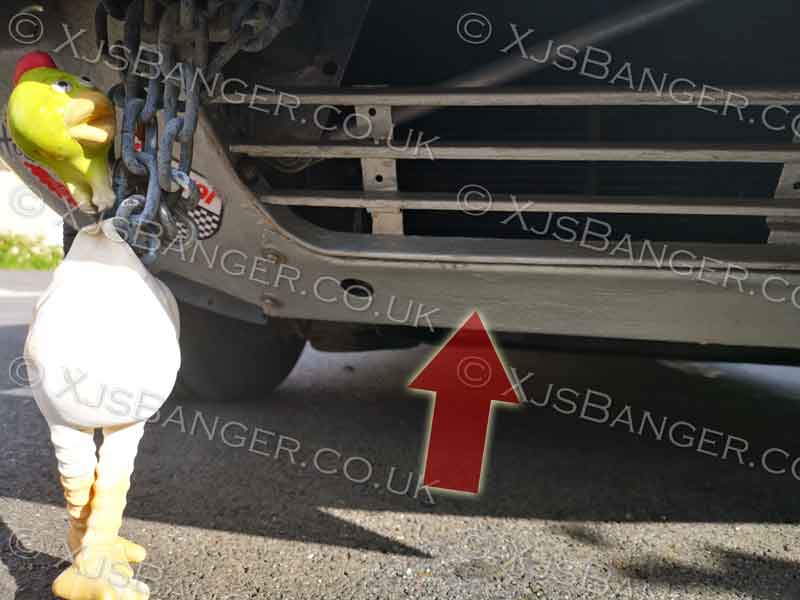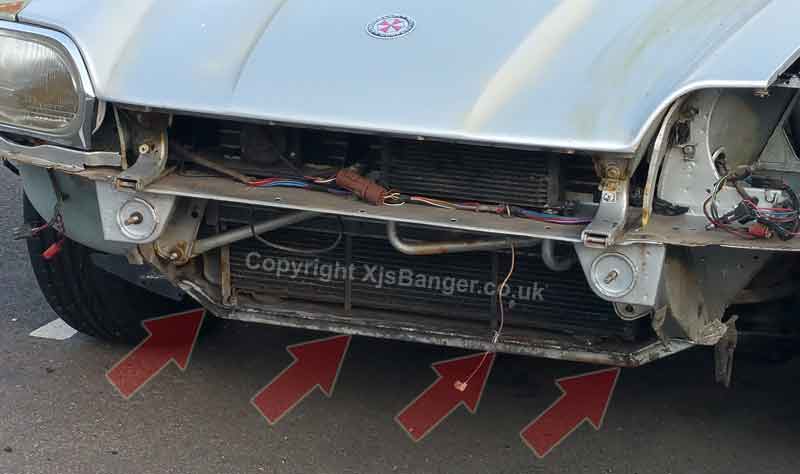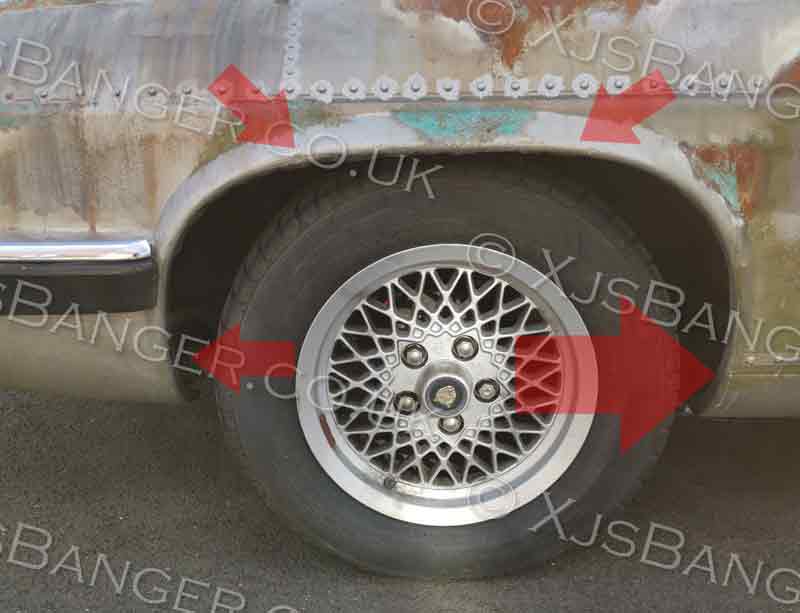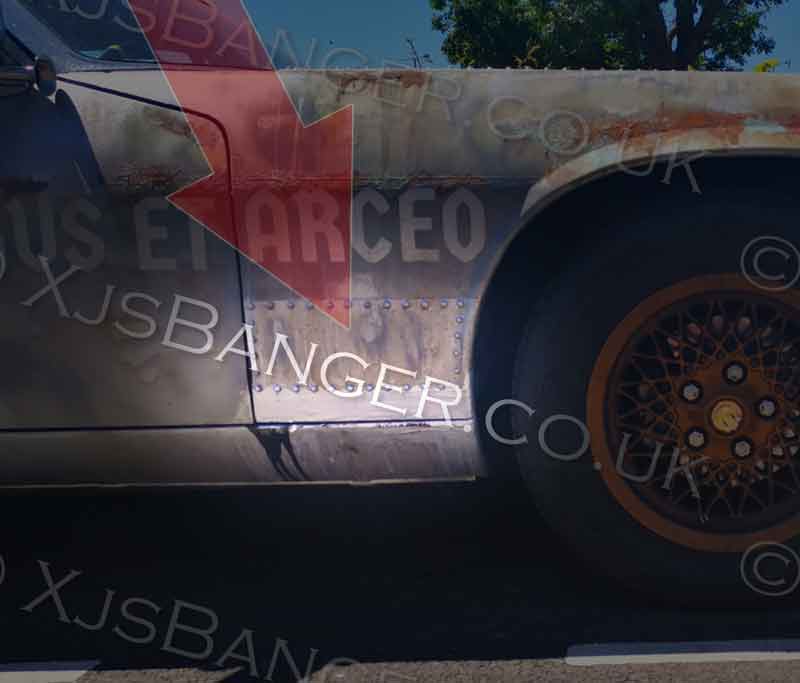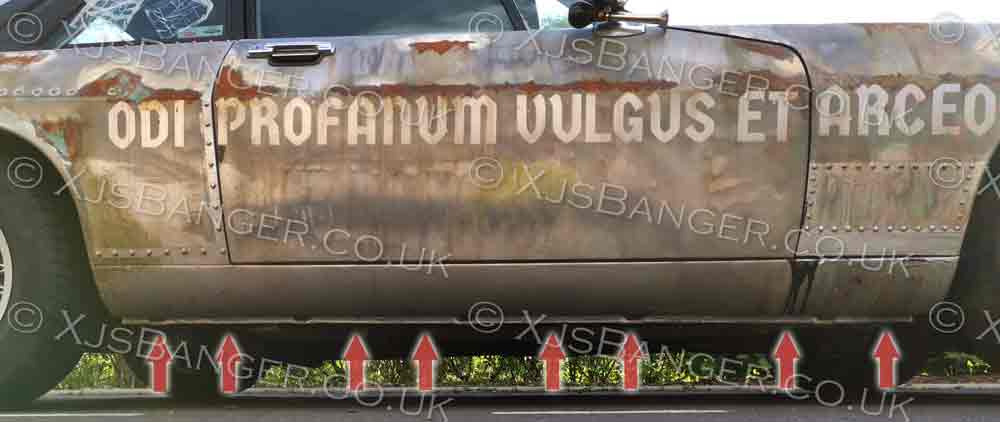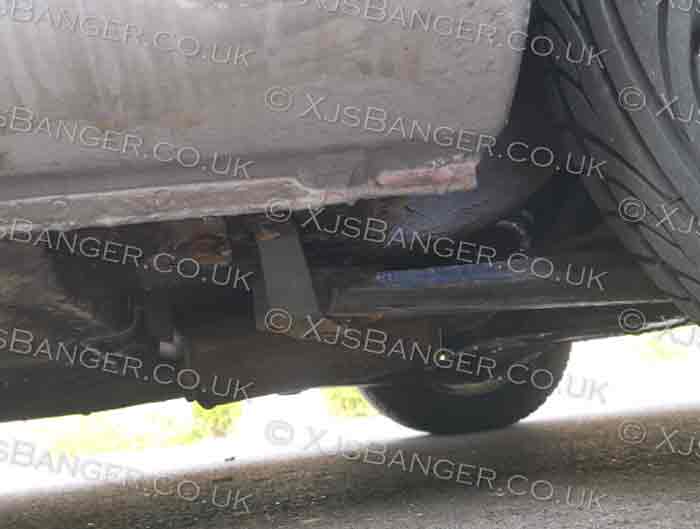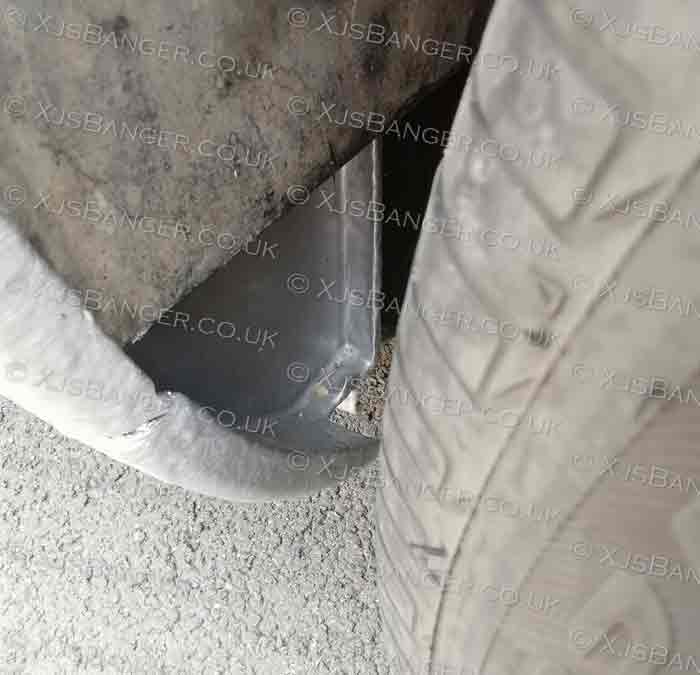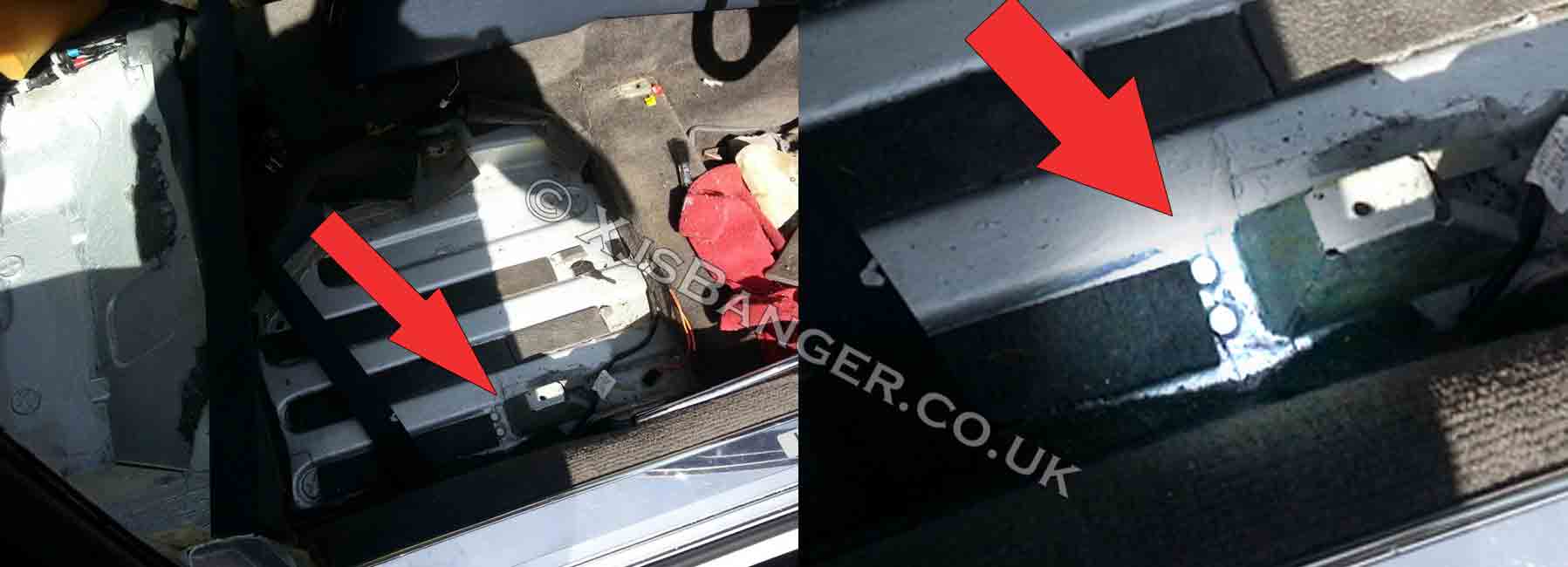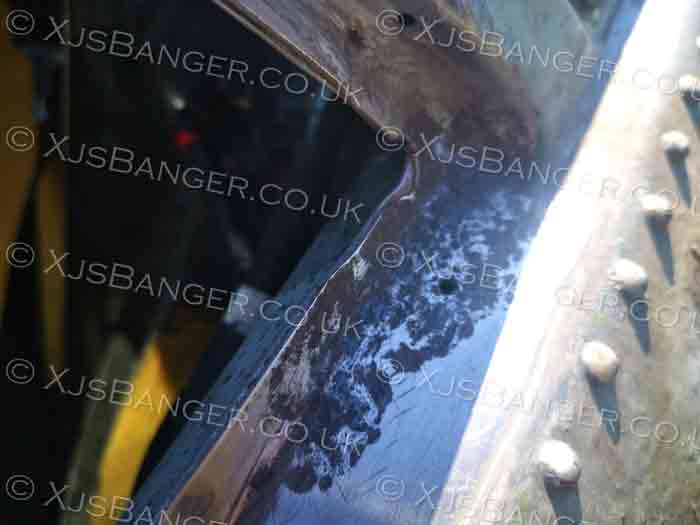Chapter 2: Jaguar XJS Purchase - Seller Profiling
Still here and willing to buy XJS? Good. It means you are bit like me – poor parasite with delusion of humanity… Before closer look on XJS in your interest – look at the owner. Any missing teeth? Pictures of too many children in the wallet? Welding mask impressions on the scalp? Those are the symptoms of potential bad decisions that you will make. Let’s create two groups of potential sellers.
Group 1 – Registered Companies.
Traders.
Some of the car traders in UK are willing to put something on top of the purchase price and push the car to another owner. Most of the car traders globally are willing to buy something for £0.99 and sell it for £9999 – and they will use all the dirty tricks to achieve this. Believe me there is no better market with specific mentality and technical understanding of the buyers – than multicultural United Kingdom. If something looks shiny and has a glitter on it – or better – Union Jack, it will go like fresh rolls. Same with the cars. To simplify. Every trader buying a car in a good shape will advertise it with severely higher resell price – in consequence leading to over-the-market price for the same model purchased elsewhere. If the car is piece of junk, some traders are buying it for pennies, usually finding non-VAT and self-employed mechanics – mostly with foreign nationality and asking to do the things that most of the registered workshop would report to the constabulary or express it on the Facebook to get the publicity. THIS MAY BE APPLICABLE TO “WELL-RESPECTED” TRADERS AND THOSE LESS KNOWN – THERE IS ABSOLUTELY NO RULE ON THE TRADER’S ORIGN, FAMILY TRADITIONS, OTHER HORSE-SHIT. I have seen dodgy places around London with dodgy sellers and really honest deals, same as glamourous traders with wealthy postcodes being absolute villains. Believe me, I have seen beautiful BMWs drained dry after flood, insurance-unreported damage and crash data wiped-of with use of stolen parts. So be prepared. Buying from the traders can be good, but requires bullshit-detector. If you’ll find any obvious issue with the car and the answer of the trader will be reflected with question “are you certified MOT tester to state that?” – say yes, just obtained Nominated MOT Tester for classes 4 and 7 (group B vehicles) and waiting for my certificate. You’ve also built 3 replica cars with your mother. If they will ask for more details – just ask who the hell are you to ask. One of the most common follow-up tactics to release the pressure – is the sentence “after purchase we will do MOT and if anything is wrong – it will be repaired”. Don’t believe in their MOT test made by Bob who also works for them. Don’t believe in any warranties –if you are a solicitor and you are happy to study terms and conditions of the warranty – you will know it’s an absolute joke – often followed by official decisions of the UK courts. Forget it. With extremely dodgy bangers – traders sometimes try to advertise the car a “private seller”, sometimes at random location – “let’s meet at…” then refusing to go to their home address to sign the documents. Avoid any remote location. My advice – avoid all traders without exception. Unless you’re willing to overpay or find one month old, rolled The Sun newspaper in your nearside sill few days after the purchase. Buying from car trader has no pros – unless you are buying XJS with estimated market value above £20000. Below – you are childish. “Buying from Trader is Safe” – it’s a Bullshit same in severity as giving your property to letting agent which “will take care of everything” – including your savings and rental income.
Auction Houses.
You will find your perfect deal here one day, as long as you can travel full-time through every shithole in UK and spending what’s left to find those across the Internet. Mostly cars of a dead people here...
Copart Auctions.
This is the place where most of the trader cars from 1.1 travelled from. Nothing good waits for you out there – unless you’re: extremely lucky, having your own salvage transport, able to read with understanding – especially terms and conditions related to Copart fees. Occasionally you will find XJS on their website.
Group 2 – Private Sellers.
Investor.
Group of the sellers that invested horrendous amount of money in their XJS knowing they will never get them back and they are using their XJS to drive it to the end of the driveway to get the leaflets from letterbox. Most of them (like me) are heretics with belief in their skills and willingness to perform all the repairs by themselves. This group is having stable budget and forgiving partners. They will sell their XJS only due to no challenging achievements left with their XJS restoration project. THIS IS YOUR ULTIMATE AIM if you want to achieve best price-quality ratio.
Investor-Delusionist.
Seller as per 2.1 however busily gathering every receipt from their XJS project – truly believing they will get the entire total during potential sale of their beloved project. They know it for sure and nothing and nobody will persuade them. Normally joining the sect of heretics from 2.1 after several months of unsuccessful sale for delusional asking price. You are not young, rich, smart and famous – so avoid. If you are – look for the different project –
Dassault Aviation’s Falcon 2000S seems to be more reasonable choice.
Wealthy Farmer.
Probably you’re going to see genuine “barn find” Jaguar XJS. Our farmer knew it’s there, hidden in the barn, for the last 10 years, he remembered, however now he needs to sell the barn with piece of surrounding land to the developer. Don’t expect XJS to be in good condition or looked-after. Don’t expect asking price to be cheap. They will give it to their friend for free even for the banger race or donate it for the auction – instead of selling it to you for the half of asking price. Farmers are usually good people and with clear introduction of facts you can prove that XJS restoration needs more attention and service - than rotor rake in their yard. Prove that you’ll restore it and love it. You can also try a blackmail – tell the Farmer that you will invite fellowship Travellers to settle down on his land. Tell that it will take time but - bit by bit - XJS will move out through the cracks in the wall. This scenario is illegal and risky – make sure you have at least
NIJ Level IIIA approved vest on.
Poor Farmer.
Their XJS needs to go and it needs to go quick, before bailiff’s visit. Some chances for a genuine “barn find”, however started up already, ongoing renovation, no beginning and no end. They need money for something else and it needs to go. Lowest asking price and wide field for negotiation. You can find real diamonds here, cheap.
Youngster.
Usually under 21, received their XJS from relatives after they’ve passed away. They were willing to start their journey with classic cars. It’s not what they’ve expected. The amount of problems and budget exceeds their capabilities. They don’t know where the spark is coming from. THey will learn that shortly. They’re struggling with the fact that car did not start after replacing battery. If you can prove that the car is actually: not environmentally friendly, can make their twitter profile score really bad, may cumulate background radiation and bad karma – it’s yours for a quarter of the price. Or just say that the new iPhone will be released shortly.
Breaker.
If the Jag is too good to strip it down – breakers will advertise it. Those sellers know XJS inside-out, starting from engine sound while still assembled, through the calculation of workload needed to disassemble rusty crap non-destructively, ending on the in-the-crusher sounds and the art of reasonable components pricing. Good deals with those people. Most of them are technically-minded motorheads. Being a motorhead will help. Most of their cars offered for sale consist of several Jaguar models transplants, not limited to XJS model only. This shall not be considered negative – as the workmanship of genuine assembly is usually worst. Be prepared for missing elements, washers, blanking caps, covers, problems with wheel alignment.
Foreigner.
Unusual group of sellers hard to find in UK as most of foreigners appreciates reliability and clean houses - over the glitter and superglued plastic nails. There is few of them, absolutely unpredictable. There is an obvious trend in every car’s popularity. Jaguar for example it considered luxury brand in Europe, while in UK it reflects what
FSO Polonez reflects in Poland,
Lada Samara in Russia,
TATA in India,
Pyeonghwa Motors in North Korea or
MG Motor in China. I remember my first amazing ride with XJ40 while owning Opel Senator able to do 140mph without an effort. Those cars were considered extremely luxury outside of UK. Foreigners from Central and Eastern Europe are usually having much better technical understanding of cars. This is not due to being smarter. Simply, “wealthy living” in those geographic areas is absolute shit and enforces their citizens to fixing what they’ve got with any resources available instead of consuming new goods like cars. Problem solving must be highly developed, same as ability to save money for trashy holidays – 5 years in advance. You can score well maintained XJS from this group of sellers or secretly bodged one – including improvised solutions like crankshaft bearings being “fixed” with use of A4 sheet of writing paper. Proceed with caution. Observe environment, follow the rule of “fuel tank status” – less petrol means higher risk of fraud. This group ca be combined with 2.1 and 2.2 above.
Jaguar “Lover”
Jaguar Lover will let you have a look at your potential purchase in front of their semi-detached house, they love Jaguars, however they usually have no clue about mechanical side and the need of regular maintenance under the bonnet. They don’t want to know. They don’t want to hear that something needs to be done - as long as it looks nice on the driveway, with moss in all less visible places. True XJS “Lover” will show you how to lift the bonnet without even one working gas strut spring designed to do so – old broomstick. Dodgy MOTs, radius arms patched with Clarke MIGs of their neighbour, fuel tank topped up to the reserve on sale, most of their XJS are probably stored on SORN. Jaguar Lover consistently follow the rule – don’t touch rusty spots until they’ll be gone with the wind blowing from the coast usually 500 yards away. When it begins to look nasty from one side tey will park other way around to hide it (sill looks nice on the driveway). Neglected bodywork, they could do something about it, even with can of Hammerite 5 years ago, but it would look nasty, non-genuine. Now the wing panels and door bottoms are gone so it’s time to sell it. Consider only genuine low mileage models, Discard the rest. If unsure – follow the look of their front garden. Wide opportunities of price negotiation. Once I went to see the XJS advertised for £3000. After 150 miles journey, few minutes after arrival the price went down to £1500 - for "fully MOT-ed example". Two days later I received a text message with the seller’s offer of £600 which was pretty attractive, however I purchased my lucky example already.
Actual XJS belonging to “JagLover” is easy to identify via nail clippings in the footwell, pictures of unknown children hidden under the dash and smell of urine from driver’s seat.
Chapter 3: Jaguar XJS Purchase - Formal Aspects
Finally, we’re here. If you skipped what’s above – it means that your common sense is fully developed and you’ve mastered non-verbal communication already…
3.1 Location.
Buy XJS ONLY at seller’s home address or trader’s registered location (don’t forget to check it twice if you don’t give a toss about everything I wrote above). Assess the property – there are two main types. Type A: your common sense tells you to wipe your shoes before going inside of the house to sign the deal. Type B: your common sense tells you to wipe your shoes before geting out. If you are living in UK, I must clarify – Type B isn’t promising. If you’re finding too many objects in front of your buyer’s property and all of those seems to be random or damaged – don’t expect anything from the XJS parked outside. This relates to both: scrap metal and garden dwarfs. Check if potentially-yours XJS has some anti-theft equipment. That will tell you a lot about the postcode of the owner. Look at the driveway – if you can find any mossy rectangular shape similar in size to Jaguar XJS – that’s regular storage location of XJS in your interest. If it’s there – the car wasn’t moving. Jags are rotting while standing still. Regarding Trade sellers – assess the same thing - if your IQ is above 52 you will be able to recognise if you are at rented premises or travellers site. Best weather for inspection: cloudy, dry, after few days of rain.
3.2 Documented history.
Don’t bother with purchasing a car check over the Internet prior to arranged viewing. You will waste plenty of money. Familiarise with it, choose the best provider and do it IF the object of your check reflects description from the advert. Go through V5 and acknowledge the number of previous buyers, anything less or equal 5 is ok. More or equal 25 may bring concerns – even if you’re ultimate loser. At least it should... Forget about any log book records confirmed with a stamp – wake up, we’re not living in 80s – you can get stamp for £3.50 including delivery. I use to know someone having full box of those, with addresses of industrial estates across the UK. When challenged, his response was simple: “fucking idiots are buying cars just because of those stamps”. He was a car trader by the way... Unless you can check stamp source or those are coming from recognised places (recognised services are having digital service traceability) – don’t be a retard and enter 21st century, even with your cheque book.
3.3 Seller’s ID .
Most of the XJS sellers are over 60, we cannot deny it. Some of them are extremely old or just passed away. Make sure that details from V5 are matched with the person in front of you, Passport is the best. If seller is unable to prove his ownership – just walk away.
3.4 Jaguar XJS Insurance quote.
Get the best one prepared in advance, prior to going for viewing. You will be too horny after your purchase and you will take anything. Remember that some companies are working from 9:00 to 5:00 which means your purchase will get finalised next day after off-work hours. Here’s a funny thing. As you probably HAVEN’T NOTICED – Jaguar XJS without car alarm installed is cheaper to insure at some insurance providers than with factory alarm system. How that works – no idea, however if you try to adjust your quote – you will see.
Chapter 4: Jaguar XJS Purchase - Where to look
4.1 Genuine “Barn Find” XJS.
This sub-section is prepared especially for people willing to hunt genuine “barn find”, not barn find left there 12 days ago for an ultimate loser happy to buy it as seen, with major flaws – f.eg. blown head gasket or trashed gearbox. Hopefully, life wisdom will allow you to distinguish non-runners willing-to-be “barn finds” from genuine ones. I have seen “barn find” of BMW 850 with actual busted engine, failing ECU, and non-working internals. All of those were sold by the owner and replaced with crap left in exchange. Double profit…
Every XJS stood still for a long time will have at least one piston in each brake calliper seized. Press the brake and you will need electric winch to pull it out. You must be extremely lucky if brakes in your “barn find” XJS are working fine and you must be extremely dumb to believe that you’re extremely lucky. Same with the manual XJS versions – depress the clutch and it will stay dropped to the floor. Petrol in fuel tank of every genuine “barn find” is orange and flows like a sirup (if you don’t know the appearance of fresh petrol – ask your wife for help in opening a tank of your hedge trimmer). Radiator’s fan should barely rough-spin when forced with your hand. Flywheel should have rust on the track grooves (inner part of the grooves where normally the belt is sitting), same thing applies to alternator, water pump and AC compressor (oxidation or rust in the grooves). Every coolant expansion tank should have rust inside if empty or rust with the coolant level - if still something left inside. There should be plenty of insects/vermin’s leftovers in the air filter housing – you can open it easily to check if those are undisturbed on sucked into the filter. After many years – tyres are flat and seriously deformed with serious cracking all-over the pressure points. Any circumferential cracks and no flats may suggest that the car was fired up and taken for a ride (negotiate 50% price drop). Fresh layer of dust will be always brighter in appearance and easy to remove. Old layers are dark and difficult to brush-off. All of the bolts/nuts should be either rusty /or/ greyish in appearance with layer of rough oxidation on them (on the plated bolts). Use pocket torch. ANY FRESH MARKS on the bolts/nuts - are the sign of tampering / catastrophic failure during idiotic start-up / exchange of components.
4.2 UK Category C and D write-offs.
There is a special, sometimes ultimate bargain under one of those two letters – thanks to UK web forums, where most of the users are repeating the bullshit of other users until bullshit will transform into something called Tribe Knowledge (also known as British Standard). There are legends being spread from pecker to mouth and from mouth to other pecker, faster than COVID-19 infection. Frankly, UK category C and D write-off cars are one of them. Explanation: category D is related to cars without any structural damage, with value lower than the cost of possible repair. Category C relates to cars with light structural damage classified by insurer as repairable (however impacting structure of the vehicle). Category D was recently rebadged and is known as Category N. Same thing applies to Category C – currently named Category S. Now, when everything becomes clear – let’s get back to your mechanical knowledge.
STRUCTURAL DAMAGE of the car in UK consist of damage made to:
- A-post or B-post
- Front or Rear Header Rail
- Front or Rear Crossmember
- Front or Rear Inner Wings
- Sills
- Bulkhead
- Side Cant Rails
- Front or Rear Chassis Leg
- Rear wheel housing extension
Those elements are making sure that your car won’t fold-up like accordion during the crash with human puddle left inside. Structural damage is repairable BUT – we are living In United Kingdom where quality of structural repairs is not being checked. Forget about any bullshit related to recommissioning requirement of the Cat C and D vehicles, additional tests, other crap. There are NONE of those required by UK law. This may be deadly when mixed with average skills of the British workshops – thinking that tack-welding is actually only true, nationally-recognised, universal method for everything. Due to what’s above – forget about any single write-off classified as Category S (old Cat C) - unless you are professional, CSWIP 3.2 certified and willing to perform repairs personally.
Category N, also known as Category D – may be an ultimate bargain for you, especially if the seller truly believes that Tribe Knowledge mentioned above is actually true. Been there, done that. Example. My Jag came as Category D – with nearside door and front wing damage (dents). It was written-off by insurer in the times where Jaguar XJS was worth less than Ford Fiesta mk2. Former owner was using it as a donor car for another XJS so plenty of things missing. Still, 11+ years in dry barn made it shiny in comparison to the examples on the road with fully bodged MOT. Nice, “gentleman” contractor with single car transporter hired for obvious purpose was trying to outbid me on arrival – after seeing Jag’s underside. Even after I gave him actual sale price multiplied by 3. Frankly it was too late and Mr Gentleman scored few f-words and kicked off without single-penny for his attendance. Another contractor of foreign background was having a better customer service. And Category D status during HPI checks? Screw Category D – most of XJS examples on the roads, after real MOT would be classified as Category B instantly with structure disintegrated by rust…
4.3 Signs of (no)servicing.
Start from the wiper motor assembly – also known as cabin air inlet. That’s the place where most of the organic crap starts to gather moisture and starts to dissolve your favourite Jaguar model. Every owner who wants to keep XJS in good condition -cleans this area every few months. Use strong led torch to see what’s laying under metal mesh. If there is a lot of crap in there you can expect draining pipes in the engine bay to be absolutely blocked. Expect water inside (especially footwells). Test the washer spray function – it normally fails completely in the cars not in use. Look under the rear suspension. You should see grease nipples installed in the bottom section of rear hubs, also on the IRS bottom plate there are round openings exposing wishbone bearings with grease nipples. If those are missing – you will need to rebuild aforementioned components – take that for granted. Ask if the owner knows how to grease the hub bearings - “not sure” answer means those were never re-greased. Using occasion inspect the rear inboard brake discs – both, from both sides. Any corrosion on the friction surface proves that pistons in brake calliper are seized. And yes, you will have to exercise and lay flat on the ground or jack it up.
Pull out engine’s dipstick (also know as bayonet in the Europe). Assess the colour of the oil – AJ6 and AJ16 are known from keeping oil clean between 6-7.5k miles oil changes. If you have dark “diesel mud” on the dipstick – engine oil was probably replaced in the summer 96’, the engine is dying or your potential purchase has a mileage exceeding 150k which normally means its engine is... dying (don’t look at the odometer – this means nothing). Check the automatic tranny’s dipstick (you don’t need to start the car). Look at the colour and smell it. Best condition would be pink with nice fruity smell (ATF). Fair condition would be red with not so nice smell. Absolutely butchered tranny will have yellow-orange colour with spicy burnt smell. Look at the drive belts – those may be cracked and disintegrating or looks new-ish, check the tension – are those just right, wobbling loose or tightened to maximum (if too tight - add the cost of new water pump and alternator bearings to potential XJS project).If owner can live with loose drive belt giving nasty sound on cold and during the entire rainy season – just imagine what else is waiting for you.
Inspect the engine bay - any electric rat-nests around ABS, wiring looms, MAF sensor or engine itself – are suggesting highly-qualified jaguar lover making repairs to the highest standard. Inspect brake fluid reservoir – what is the colour of the fluid? I know, I know what you’re willing to say – electronic brake fluid tester is much better… Unless it’s made in China for a dollar without any calibration whatsoever. If you have one from quality manufacturer (no, not SEALY or DRAPER) – use it. If not – look at the colour – amber, clear is good. More brownish – more unacceptable condition of your brakes is. WAIT! you have nothing in ABS reservoir to start with (plastic baffle in the reservoir). SO PUMP THE BRAKE PEDAL WITH ENGINE SWITCHED OFF. Pump and it will flow up. Every XJS owner knows that Jaguar (Girling) brakes are failing badly, The failure mode of Girling brake callipers is not obvious – it’s legendary. Let me challenge this legend with the words: To all sheep-shagging XJS-owning peasants: what you don’t know is the fact that Jaguar XJS should have brake liquid changed every 2 years of 30k mile whichever comes first. When was the last time you’ve replaced yours? Girling brakes in XJS are massive, made of steel, looks exactly like it should look in the over-2tonne car, are having exact amount of pots to stop this pile of British Sheet Metal. Not like the crap installed in these days cars, proven-engineering-design term and continual improvement rubbish… Only major Girling flaw - British chrome/nickel plating on the brake pistons... This makes massive difference, like a difference between spelling “Can’t” and “Cunt” to the female Border Force officer at London Stansted Airpor.
Jaguar XJS Rear Greasing Points: grease nipple under rear hub assembly. If not there, pobably car wasn't serviced correctly over the last century.
Another four greasing nipples under the IRS bottom plate. Openings allow to grase those easily, without lifting your car.
Wiper motor assembly with metal mesh. Mesh doesn't work well and you can expect 2.5 lbs of rotting, organic crap inside.
Jaguar XJS ABS brake liquid reservior. Exactly the same like in Aston Martin. Amber, clear liquid is a good sign. Check with electronic tester if possible (Pump up the brake pedal to see it on top).
4.4 Technical examination.
I really doubt that any of the XJS sellers will allow you to strip it down to see what’s truly hidden inside, hence all the checks listed below – are only those non-invasive, moderately non-invasive and non-destructive. Most of them are dirty so book your manicure session in advance and leave Versace’s frock coat from Primark on the hanger.
4.4.1 Basic Checks.
In this section I assume that you have managed to complete all the basic checks – mandatory for non-wanking buyer of any car. That includes but is not limited to : central locking system (check with passenger doors manually locked), electric mirrors, windows (check both all the way to the bottom and up), blower fan, heating, air conditioning, light beams, indicators, wipers, horn, all lights including reverse and fog lamps, interior lights including switches and their backlight, speedo and rev counter, fuel gauge, pressure gauge, charging gauge, warning lights, fault codes displayed on something called “trip computer” (yes, your supercar is able to do it), locks and keys (check if all fit to one key or each one is different) etc… Only few of those are mentioned below – as requiring special attention. Find the issues, assess the workload and asking price – then negotiate.
4.4.2 Before you start it up.
Check the steering wheel – rock it lightly both ways, probably you will find a play and weird sound causing it. Stuck your head into the driver’s footwell. There should be a universal joint visible:
4.4.3 Starting the engine.
Time for a real mechanical test like those seen on Hollywood movies. It’s time to feel like USA is bringing democracy to the rest of the world. Same truth as your XJS condition - per advertisement. First, hit the ground and check with your palm how cold in the engine's oil sump pan. If it’s not, seller lied about leaving it dead cold for you. You should have no problem reaching the sump pan unless you are midget. Midgets are also owning and driving some XJS models, they can do more than you, for example sit comfortably on the XJS's rear passenger's sofa. If you're a midget - ask random pedestrian to do it for you (works in UK if you’re a midget) or offer a £5 for doing it (the way it goes with rest of the world). Now it’s time to lift a bonnet.
Heater Matrix Vacuum Valve.
Slightly less famous than Jaguar Girling brakes – here it is, a valve in the engine bay that shuts off the coolant flow to the heater matrix when the cabin blower fan is switched on and the temperature adjuster is set to minimum. Every Jaguar XJS owner knows – it’s failing badly. Well, another challenge – as my one is working perfectly. Two words, so unknown among Jaguar owners: CORRECT COOLANT and LUBRICATION. If you will ask Jaguar owner – what is the best coolant for their car – most probable answers are “I’m buying universal in Halfords” and “water, of course”. How can you expect something to be abused, last forever while not being Toyota. What is a true British Tragedy – Jaguar Lovers, probably inspired by Jaguar Workshop Manual from 80’s – are notoriously topping up their cooling system with “Bars Seal Shit” causing disaster in the entire engine… That includes vacuum valve in the subject. Photo of device from my Jag below, working with G05 coolant and being sprayed with XCP rust inhibitor once every 6 months. No problems so far. You will find of discussions across the Internet – “what coolant should be used with AJ6 and AJ16 engines?”. Well, your cylinder head is made from aluminium. Figure it out…
Vacuum Valve Open. Coolant flows through heater matrix.
Vacuum Valve Closed. Heater matrix sealed-off. Temeprature spindle set to cold, blower fan must be switched on.
Engine Check.
Obvious things first. Can you hear it running smoothly on idle, is it running silent and stable on hot, can you match the sound of it with the mileage on the clock? As the seller will never allow you to do compression checks or remove the components – here’s the magic used by your grandfather. This thing is called Vacuum Gauge and guess what – it’s been used to diagnose the condition of the engine long before the OBD2 ports were designed. The trick is – it requires common sense and something more than pressing “start” button on touch-screen device. Frankly we have a software that thinks for you, while you’re improving sweet-photos on Facebook profile. I won’t tell you how to use it – you will find plenty of tutorials across the Internet. To simplify – here’s short test video of my engine attached. Current mileage 60k. Get similar reaction/values/jumps/drops and you will confirm excellent condition of your potential purchase. Read the tutorials how to use vacuum gauge first. Study it. There is also a place to connect it on AJ6 3.6 engine (probably on AJ16 as well). It is worth to buy additional T-piece and few inches of extra vacuum hose to allow installation on every vacuum line outlet.
Vacuum Gauge attached to unused port in the inlet manifold.
Unused vacuum port on inlet manifold.
Expect blanking cap from inlet manifold to come off in pieces (just don't tell the owner). Have something to plug it with you.

